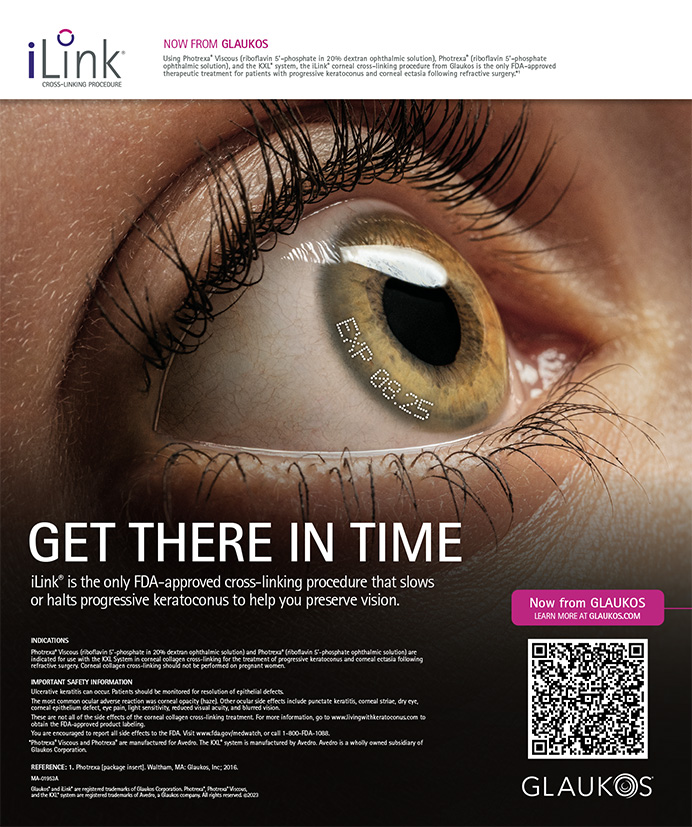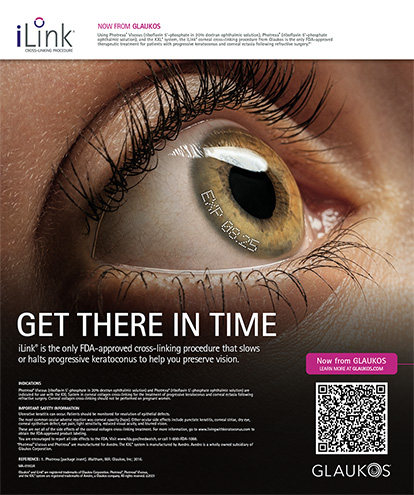Hydrodissection. Hydrodelineation. These two exceedingly uncomplicated staging techniques allow for safe and efficient removal of the nucleus. In most cases, these steps improve the process of cortical removal as well.
IRRIGATION IS INVALUABLE
I have not been as consistent with removal of the cortex by hydrodissection as I would like. Staged J-cannula irrigation of the residual cortex prior to standard irrigation and aspiration (I/A) has solved this particular dilemma for me. The technique is exceedingly simple, incorporates into any existing surgical routine, uses inexpensive available J-cannulas (Models AE-7232, left curve, and AE-7231, right curve [ASICO; Westmont, IL]) and should have thorough cortical removal safely completed in less than a minute in virtually every case. In essence, it's the completion of hydrodissection of the cortex, but after removal of the physical bulk of the nucleus.
CONVERTING TO I/A
At the completion of nuclear removal, I pass off the phaco handpiece, and my surgical scrub hands me a 26-gauge McIntyre-Binkhorst J-cannula on a 5-mL luer lock syringe filled with BSS® (Alcon Surgical, Fort Worth, TX). During the conversion to I/A, I place the tip of the cannula between the posterior capsule and the remaining cortex. I vigorously irrigate, gently sweeping side to side against the capsule and into the fornices. By the time the I/A handpiece is ready, I've dislodged most, if not all, of the residual cortex, including the subincisional material, and aspiration takes only a few seconds if needed.
REMOVAL
I stage my cortical removal this way on every case. By reviewing operative videotapes, I find my typical cortical clean-up takes between 20 to 50 seconds. In most cases, the cortex flows out of the incision with a single irrigation. Often, a second, and occasionally a third irrigation is useful to complete the displacement of the adherent cortex, but it will come free without placing an aspirating tip into a region of poor visualization. Even stubborn corticocapsular adhesions will succumb to the effects of the irrigation. Dr. Jeff Shaver of Edmond, OK, prefers to implant the IOL just following the J-cannula irrigation, clearing the cortex with the viscoelastic afterward. I have used this variation at his suggestion many times.
OUTCOMES
This technique can be used safely during every case, regardless of pupil or capsulorhexis size. If performed properly, an aspirating tip never comes in contact with the posterior capsule, especially in a region of poor visualization. (It will take patience to overcome the urge to rotate the aspirating tip of the I/A handpiece toward the capsule to remove clumps of cortex.)
It is quite possible that this technique should reduce rates of posterior chamber opacification as well. While I take full advantage of the benefits of square-edged IOLs with posterior haptic vaulting (the Sensar OptiEdge, AR40e; Allergan Surgical, Irvine, CA ) the thoroughness of cortical removal is a primary surgeon factor in the reduction of posterior capsule opacification. I have had the opportunity to test this technique with Dr. David Apple and his team, lead by Drs. Liliana Werner and Suresh Pandey. It is our belief that this supplemental technique can lower posterior chamber opacification rates by improving the effectiveness of cortical removal on a routine basis.
Steven H. Dewey, MD, practices in Colorado Springs and is an Associate Clinical Professor at the University of Colorado. He has no financial interest in any of the products mentioned herein. Dr. Dewey may be reached at (719) 475-7700; deweys@prodigy.net Jeffrey Shaver, MD, is a Clinical Instructor of Cataract and Refractive Surgery at the Dean McGee Eye Institute in Edmond, Oklahoma. He may be reached at (405) 348-0913; Jeffrey-shaver@ouhs.edu

